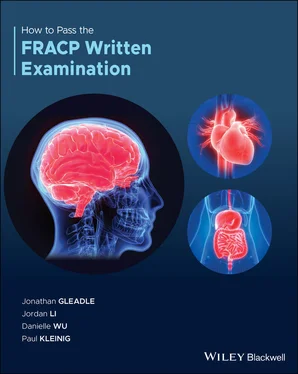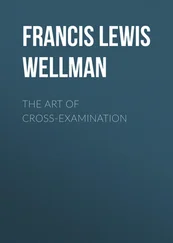1 ...8 9 10 12 13 14 ...50 Once in the circulation, cholesterol crystal emboli lodge in small arteries (150–200 um in diameter); which then cause an inflammatory reaction, intimal proliferation, and intravascular fibrosis leading to the narrowing or obliteration of the lumen and ischaemic changes. Peak incidence is usually two to four weeks after a procedure.The true incidence of cholesterol embolisation is difficult to estimate. Retrospective autopsy (incidence 10–27%) or biopsy (incidence 1%) studies may include subclinical cases. The hallmark of the condition is the presence of needle‐shaped empty spaces in histological sections as the lipids are dissolved by the techniques used to prepare the tissue for histological examination (See below).
Patients can be asymptomatic, or they can present with a distinct clinical syndrome, ranging from a cyanotic toe to a multiorgan systemic disease that can mimic other systemic diseases such as vasculitis. The distribution of end‐organ damage depends on the anatomical location of the original atherosclerotic plaques and the extent of organ involvement. Laboratory investigations are non‐specific. Eosinophilia appears to be the most common finding up to 80% of cases.
The presence of a triad of a precipitating event, AKI, and peripheral embolisation strongly suggests the diagnosis. The presence of other complications of atheroembolism, such as gastrointestinal bleeding and neurological involvement, should raise the suspicion level. To confirm diagnosis, a biopsy of the target organs is needed.
There is no effective treatment apart from symptomatic and supportive measures, including dialysis. Anticoagulants should be avoided if possible because they can potentiate the problem. Disagreement exists concerning steroid treatment. Recently, statins have been found to be associated with better renal outcome likely due to statin‐induced plaque stabilisation and regression. Patients with cholesterol embolisation have a poor prognosis with one‐year mortality rate ranging from 64–87%.

Kronzon I, Saric M. Cholesterol Embolization Syndrome. Circulation. 2010;122(6):631–641.
https://www.ncbi.nlm.nih.gov/pubmed/21993354

Scolari F, Ravani P. Atheroembolic renal disease. The Lancet. 2010;375(9726):1650–1660.
https://www.ncbi.nlm.nih.gov/pubmed/20381857
13. Answer: D
Computed tomography coronary angiography (CTCA) is an imaging test that has been shown in meta‐analyses to have excellent sensitivity (98%) and good specificity (88%) for significant coronary artery disease (CAD) with stenosis >50%. Its high negative predictive values (96–100%) suggest CTCA is an excellent test for ruling out significant disease in patients with low‐to‐intermediate pretest probability of CAD. Current data does not support the use of CTCA in asymptomatic patients.
CTCA is not recommended in patients with previous coronary stents as the stents may produce artefact and make the results uninterpretable. Stent diameter <3 mm is thought to be unevaluable. However, very selective cases can be evaluated using CTCA, including large stents and simple left main stents. CTCA is not appropriate for patients with STEMI given the need for invasive coronary angiogram without any delay.
To avoid artefacts which may hamper interpretation of the results, the patient should be in sinus rhythm with a heart rate <65 beats/min, able to hold their breath for 10 seconds, able to tolerate beta blockers and nitrates (nitrates are given to dilate the coronary arteries by most centres), and able to hold their arms above the head during the scan. Previous contrast allergy must be ruled out prior to CTCA. If the patient has significant renal impairment, CTCA may not be the best investigation for CAD due to the risk of contrast nephropathy.

Liew G, Feneley M, Worthley S. Appropriate indications for computed tomography coronary angiography. Medical Journal of Australia. 2012;196(4):246–249.
https://www.mja.com.au/journal/2012/196/4/appropriate‐indications‐computed‐tomography‐coronary‐angiography
14. Answer: B
This patient has evidence of native mitralvalve infective endocarditis (IE) complicated by cerebral emboli. IE is the infection of the endocardial surface of the heart and may involve one or more heart valves, the mural endocardium, or a septal defect. The highest rates are observed among patients with prosthetic valves, intracardiac devices, unrepaired cyanotic congenital heart diseases, or a history of IE. However, more than 50% of cases are not associated with underlying valvular disease. Other risk factors include chronic rheumatic heart disease, age related degenerative valvular lesions, haemodialysis, and co‐existing conditions such as diabetes, and intravenous drug use.
Streptococci and staphylococci account for 80% of cases of IE, with proportions varying according to valve (native vs prosthetic), source of infection, patient age, and coexisting conditions. Staphylococci are now the most common cause of IE and approximately 35%–60.5% of staphylococcal bacteraemia are complicated by IE.
Cases of IE in which a blood culture is negative (10% of cases) may be due to patients exposed to antibiotic agents before the diagnosis of IE or IE caused by fastidious microorganisms.
Cerebral complications are the most frequent and most severe extracardiac complications. Vegetations that are large, mobile, or in the mitral position and IE due to Staphylococcus aureus are associated with an increased risk of symptomatic embolism.
IE remains a diagnostic and therapeutic challenge. Identifying the causative microorganism is central to diagnosis and appropriate treatment; two or three blood cultures should routinely be drawn before antibiotic therapy is initiated. When IE is suspected, echocardiogram should be performed as soon as possible. However, the diagnosis of IE can never be excluded on the basis of negative echocardiogram findings, either from transthoracic echocardiogram or transesophageal echocardiogram.
Appropriate antibiotic treatment of IE is guided by Australian Therapeutic Antibiotic Guidelines. Approximately 15%–25% of patients with IE eventually require surgery. Indications for surgical intervention in patients with native valve IE are as follows:
Congestive heart failure that is refractory to standard medical therapy
Fungal infective endocarditis
Persistent sepsis after 72 hours of appropriate antibiotic treatment
Recurrent septic emboli, especially after 2 weeks of antibiotic treatment
Rupture of an aneurysm of the sinus of Valsalva
Conduction disturbances caused by a septal abscess
Kissing infection of the anterior mitral leaflet in patients with IE of the aortic valve.

Hoen B, Duval X. Infective Endocarditis. New England Journal of Medicine. 2013;368(15):1425–1433.
https://www.ncbi.nlm.nih.gov/pubmed/23574121
15. Answer: C
According to the ACC/AHA guideline, a biventricular pacemaker and defibrillator should be offered to patients with NYHA class III or IV heart failure, an ejection fraction <35% and a QRS complex >0.12 second. Approximately 70% of patients' symptoms improve due to resynchronisation of the timing of the left and right ventricular contraction. Device treatment has been shown to improve mortality, ejection fraction, quality of life, and functional status, as well as reduce readmission.
Читать дальше
















